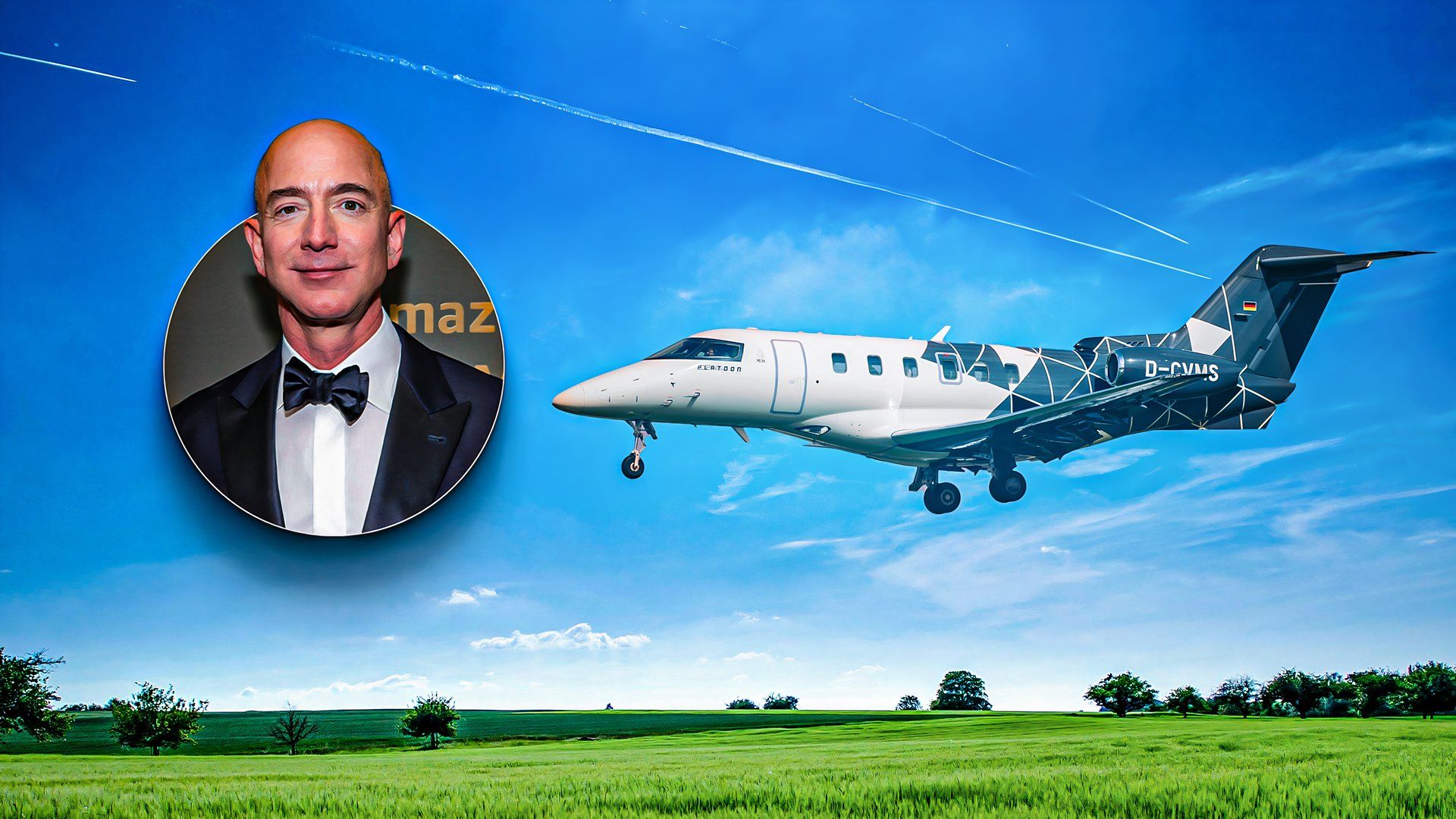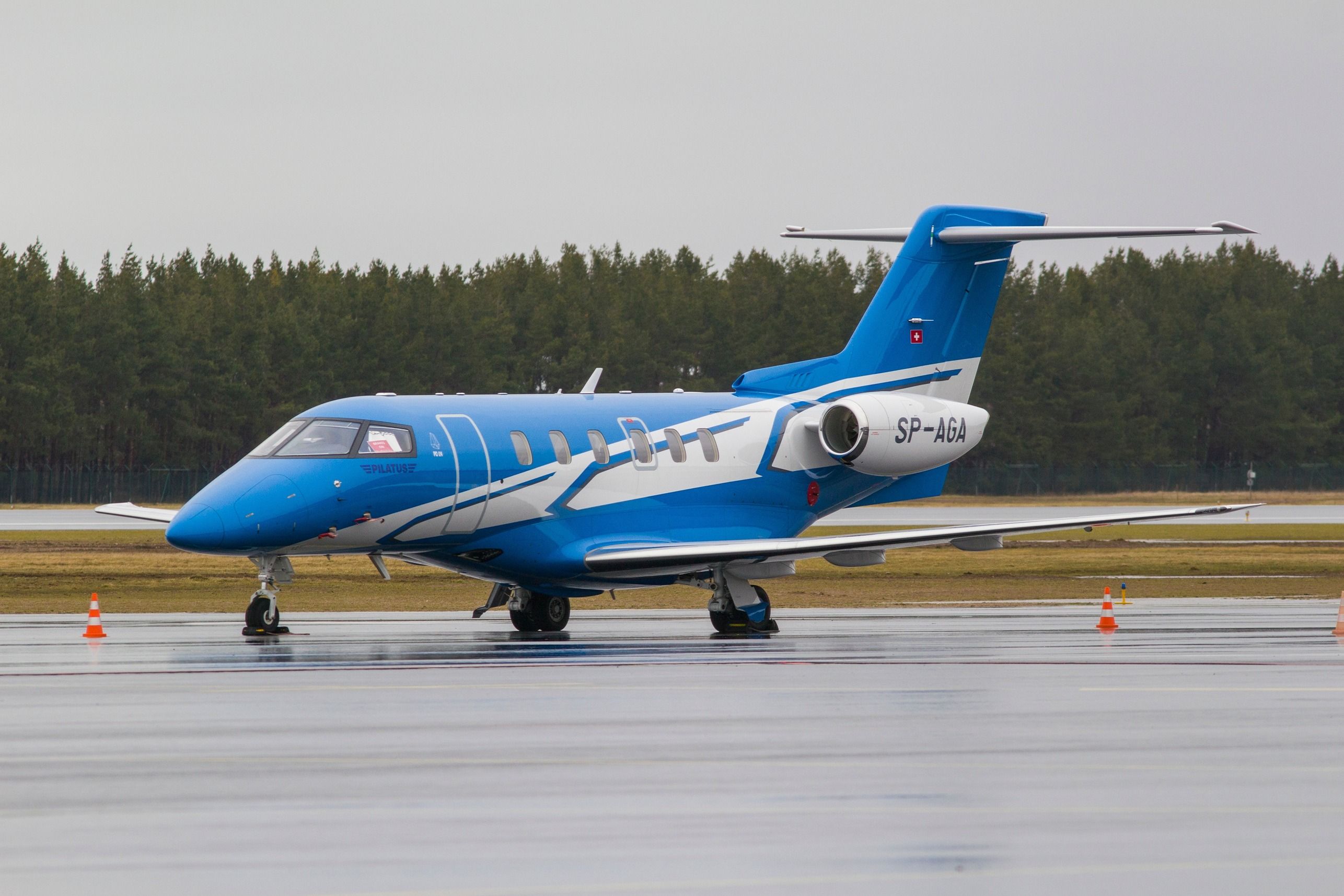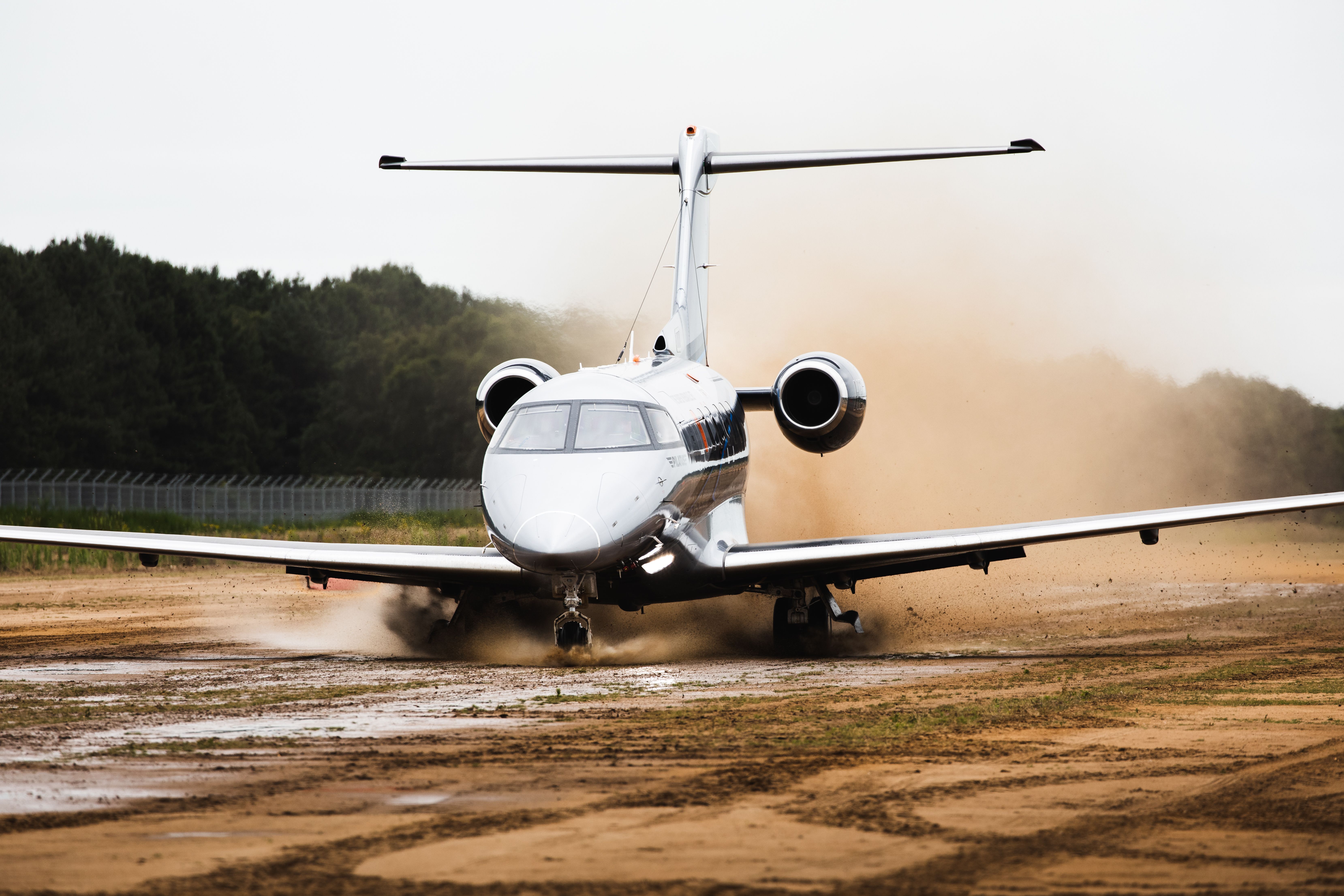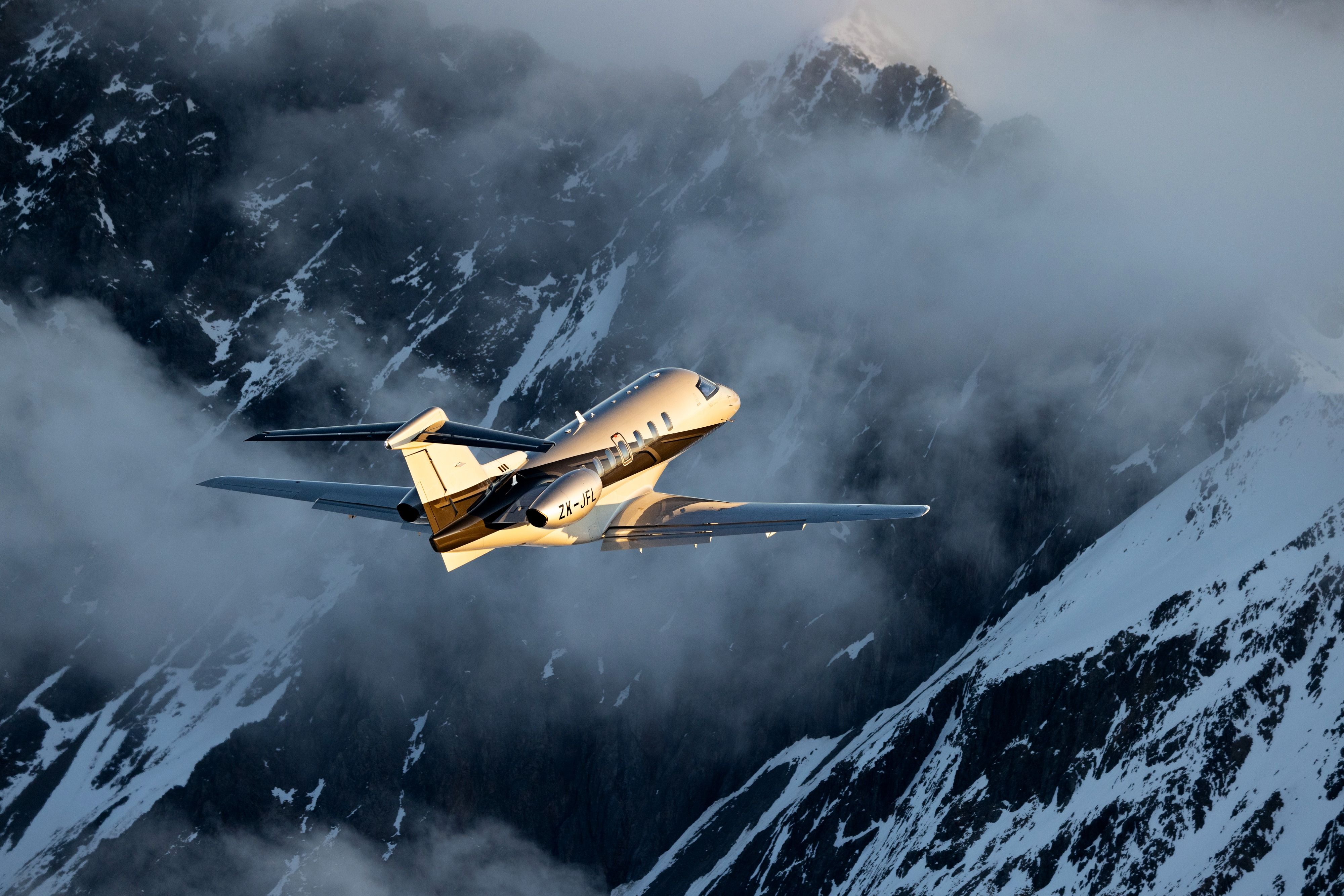Summary
- Bezos operates three jets, including two Gulfstream G650ERs and a Pilatus PC-24, to travel globally.
- His Pilatus PC-24 can accommodate ten passengers, has a range of 2,000 nautical miles, and flies at 440 knots.
- The PC-24 features Williams FJ44-4A turbofan engines, Honeywell Primus Epic 2 avionics, and air ambulance variant.
Jeff Bezos is one of the richest men in the world, holding a net worth that is over $200 billion. The founder and former President and Chief Executive Officer (CEO) of Amazon, the world’s largest e-commerce company, is one of the world’s most successful businessmen. The company he founded, which started as just an online bookstore, now offers a wide range of products. These productions include a variety of e-commerce products, video streaming, audiobooks, and cloud computing, and it is an industry leader in artificial intelligence.
Although Bezos is no longer the President and CEO of Amazon, he still retains a high leadership position and is listed as the Executive Chairman of Amazon. This position, as well as holding several other leadership positions in other companies, requires Bezos to constantly travel for business and other obligations around the world. His many responsibilities are worldwide, and Bezos may not have the time to constantly fly on commercial airlines. Because of this, to save time, Bezos operates several private business jets to shuttle himself and his executives, close friends, and family across the world.

Related
How Many Private Jets Does Amazon Founder Jeff Bezos Own?
The Amazon Founder operates a small fleet of business jets.
Currently, Bezos operates a small fleet of business jets. He is most known for flying onboard one of his two ultra-long-range business jets, which are both Gulfstream G650ERs. These two aircraft, which are registered as N271DV and N758PB, per JetSpy, were the largest and fastest that Gulfstream had produced until the G700 was introduced earlier this year.
N271DV was produced in 2015, and N758PB was produced and purchased in 2019, per FlightAware. These aircraft can reach a range of 7,500 nautical miles (8,600 miles) and can reach a maximum speed of Mach 0.925 (710 miles per hour). Both of these two business jets can fit a maximum of 19 passengers.
Photo: Renatas Repcinskas | Shutterstock
However, beyond these two ultra-long-range business jets, Bezos owns a third aircraft in his fleet. His third business jet is a light aircraft manufactured by Pilatus, which is designated as the Pilatus PC-24. This aircraft is the newest business jet that Bezos purchased, but is significantly different from the previous Gulfstream G650ERs that he operates. Let’s take a closer look at the PC-24 that Bezos owns, as well as some of the unique features that encourage Bezos to purchase this plane.
Bezos’ PC-24
Specifically, the Pilatus PC-24 that Bezos owns and operates is registered as N194PJ, per JetSpy. This aircraft has serial number 194 and was originally produced in 2020. Western Aircraft Inc. owned the aircraft until August 2021. However, TVPX Aircraft Solutions, a trust based in North Salt Lake City, Utah, took management of the place at this time, per FlightAware. Bezos took over as the main operator of this aircraft at that time.
Photo: Pilatus
N194PJ has been very active throughout the year. At the time of this writing, the aircraft has already flown 67 times so far in 2024. This includes 106 total flight hours, per JetSpy. Its most visited airports in 2024 are:
- Boeing Field King County International Airport (BFI)
- El Paso International Airport (ELP)
- Santa Monica Municipal Airport (SMO)
This was on top of a busy year last year, in which N194PJ flew 156 times for a total of 245 flight hours, per JetSpy. Boeing Field has remained the aircraft’s most visited airport since it was acquired by Bezos.
History of the PC-24
Pilatus began development of the PC-24 as early as 2007. The Swiss company wanted an aircraft that was similar to the successful PC-12 turboprop. However, the company wanted to improve the aircraft’s range and speed while maintaining many features of the PC-12, such as its landing and takeoff capabilities. Because of the required improvements, Pilatus intended to make the PC-24 jet-powered.
Photo: Pilatus Aircraft
The aircraft was officially introduced in May 2013, and it took its first flight in May 2015. The flight testing process was lengthy and had several delays. However, the aircraft achieved better specifications than initially intended, including a higher cruise speed.
It received both its European Aviation Safety Agency (EASA) certification and its Federal Aviation Administration (FAA) type certification in December 2017. The first delivery of the PC-24 occurred on February 7, 2018. Since it was introduced, over 100 aircraft have been delivered. Beyond the base model of the PC-24, Pilatus also introduced an air ambulance version of the business jet. This aircraft was introduced in November 2019. This variant comes with three beds, an electrical stretcher loader, and supplemental power systems within the aircraft.
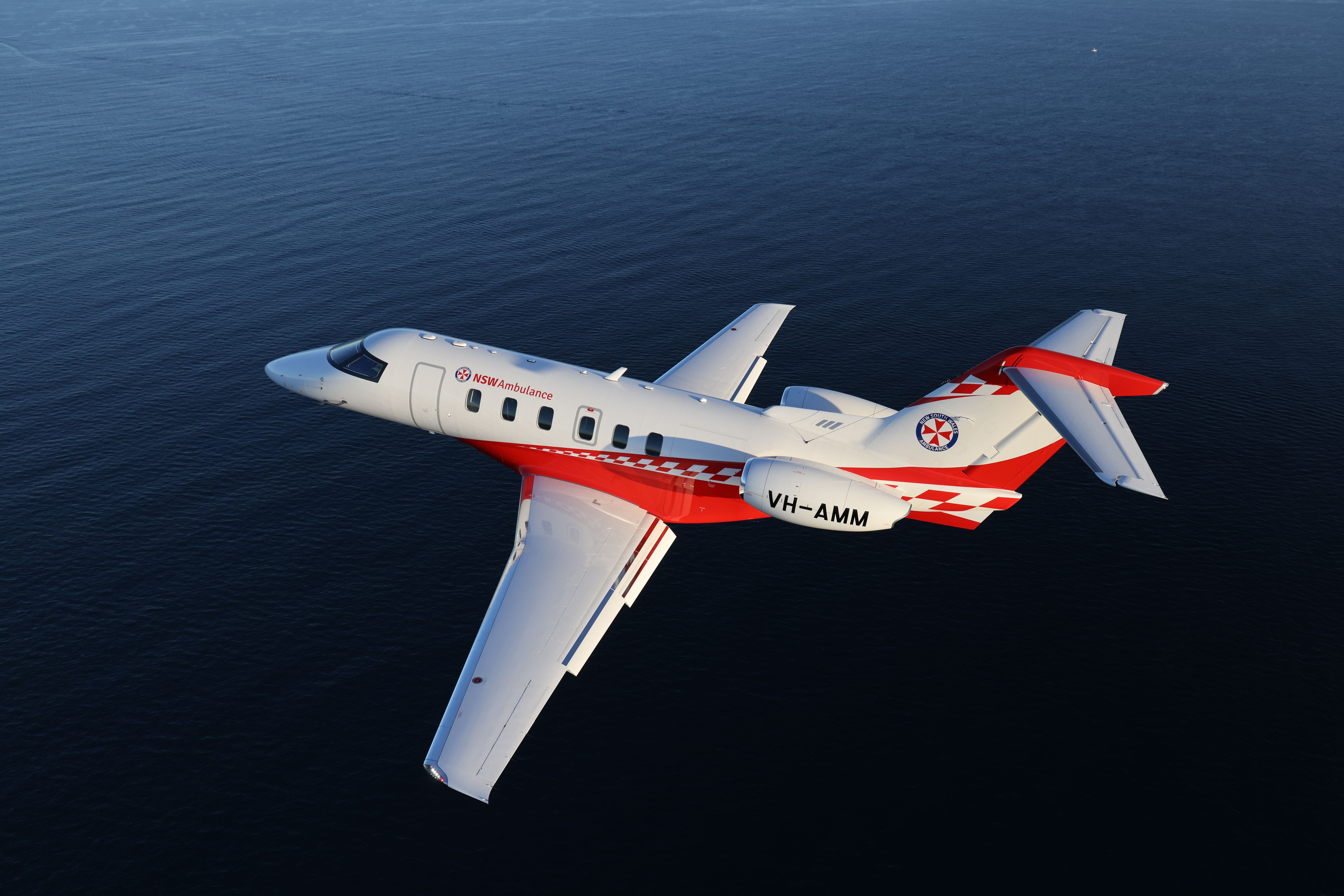
Related
Super Versatile Jet: A Look At The Pilatus PC-24 Air Ambulance
New South Wales Ambulance recently introduced its first PC-24 into service.
Notable features of the PC-24
The PC-24 was the first business jet that Pilatus produced. Pilatus chose two Williams FJ44-4A turbofan engines, which each provide over 3,400 pounds of thrust each. These powerful engines help the aircraft achieve the following performance measures:
|
Length |
55 feet two inches |
|---|---|
|
Height |
17 feet four inches |
|
Wingspan |
55 feet nine inches |
|
Maximum takeoff weight (MTOW) |
18,700 pounds |
|
Cruise speed |
440 knots (506 miles per hour) |
|
Rate of climb |
4,070 feet per minute |
|
Range |
2,000 nautical miles (2,302 miles) |
|
Service ceiling |
45,000 feet |
Inside the aircraft, the cabin can fit up to ten passengers. The cross-section of the interior is five feet seven inches wide and five feet one inch tall. It can reach a cabin altitude of just 8,000 feet when flying at 45,000 feet. The avionics system is based on the Honeywell Primus Epic 2, and it can be flown by a single pilot.

